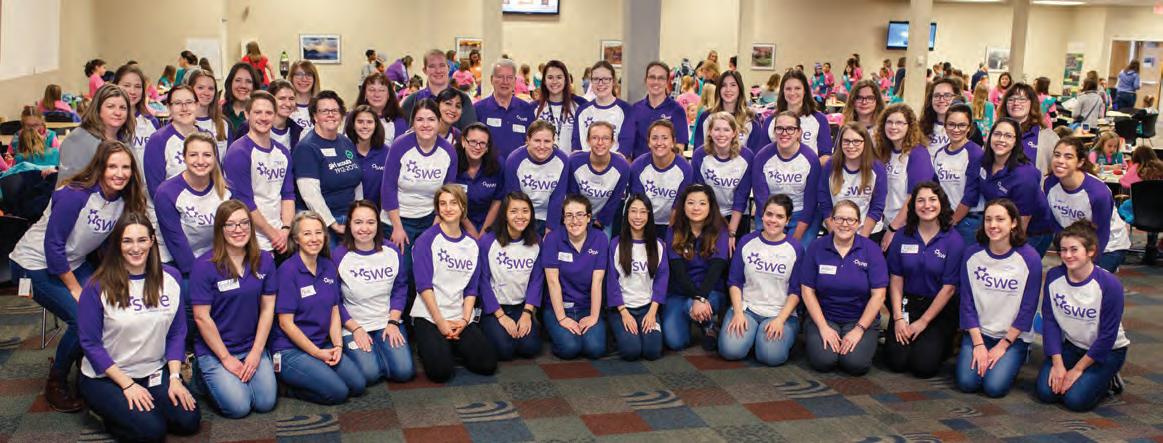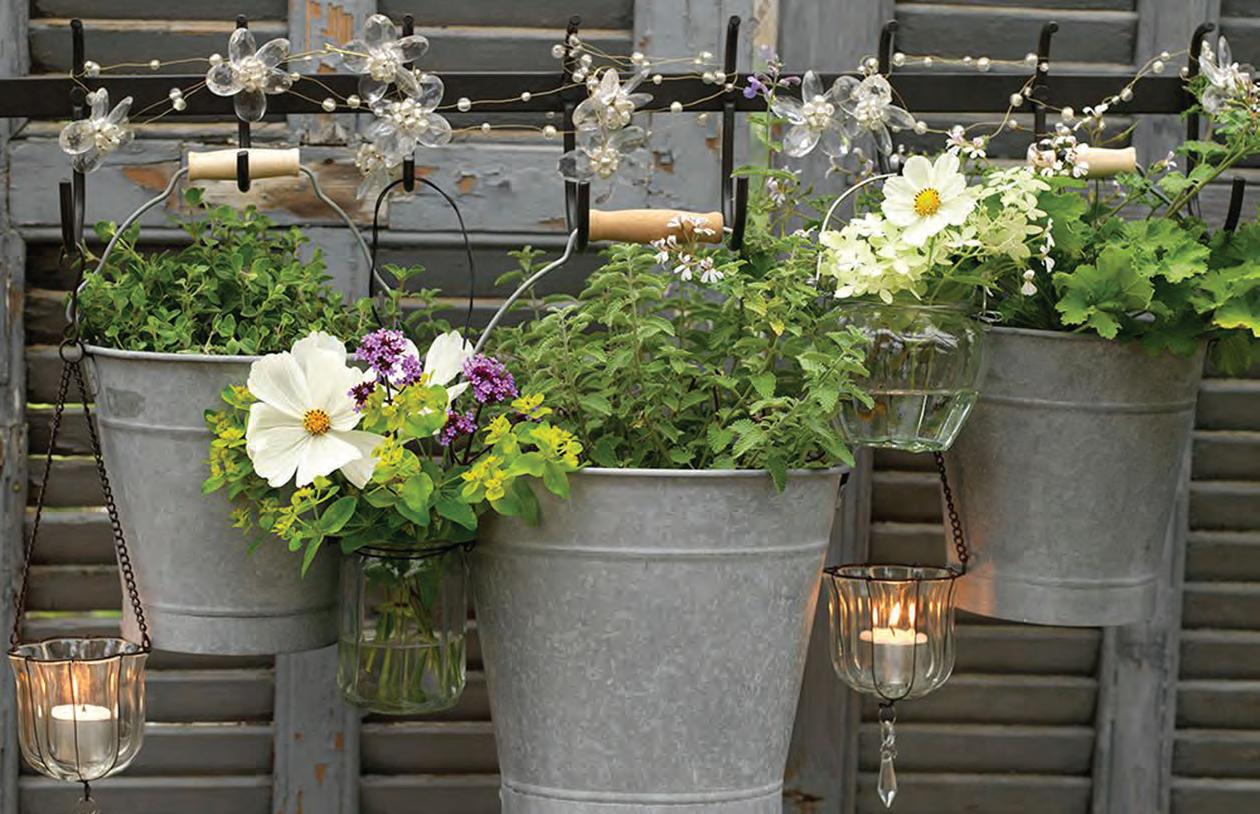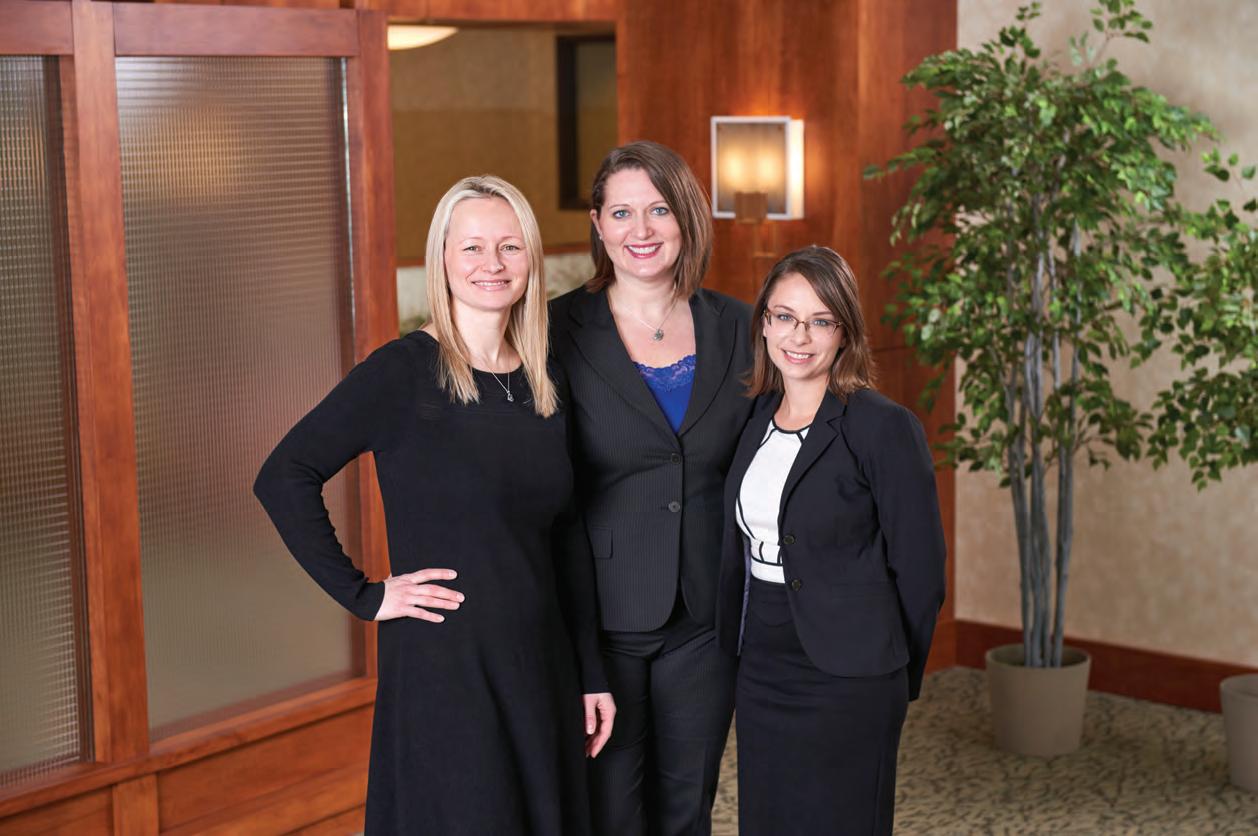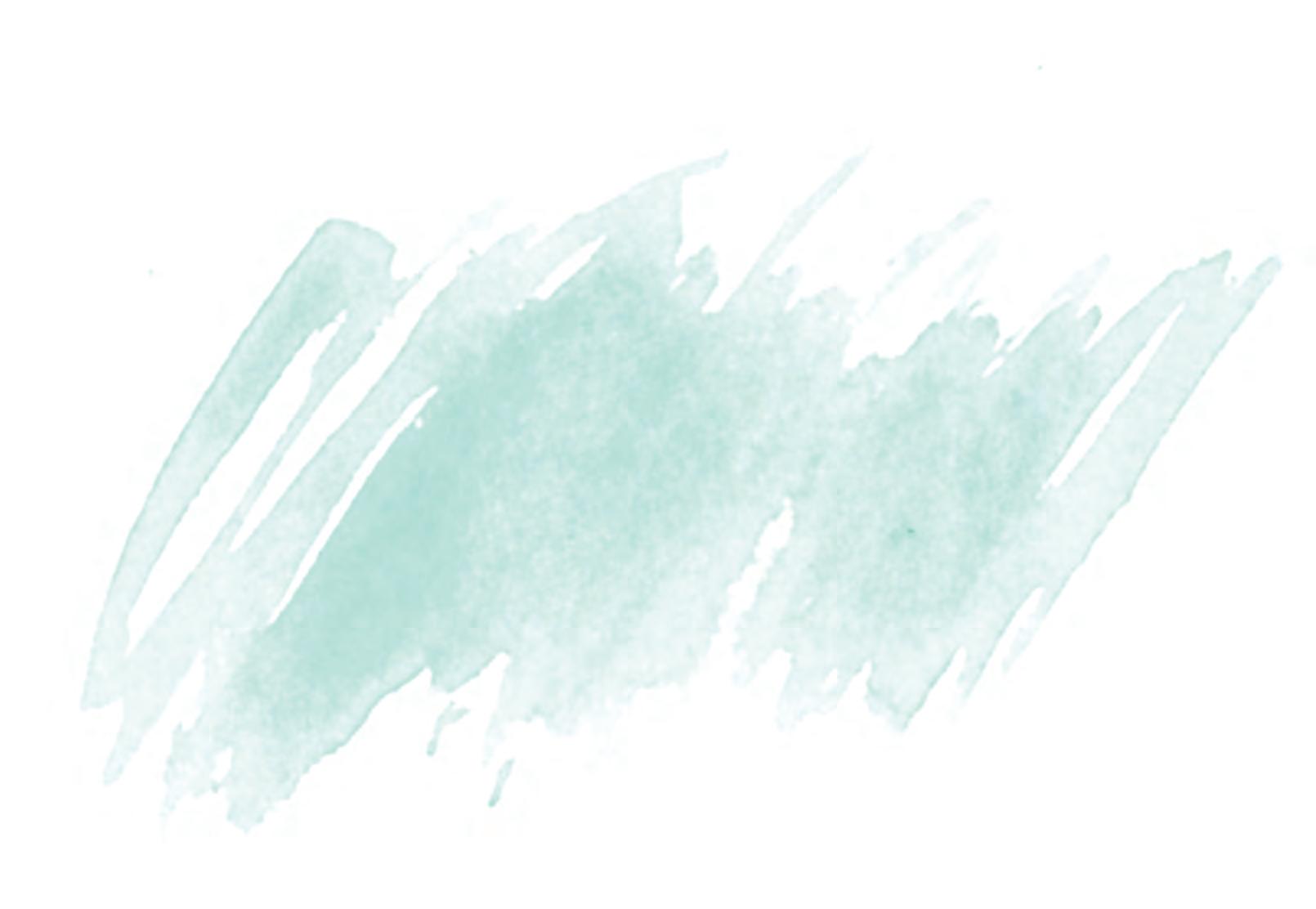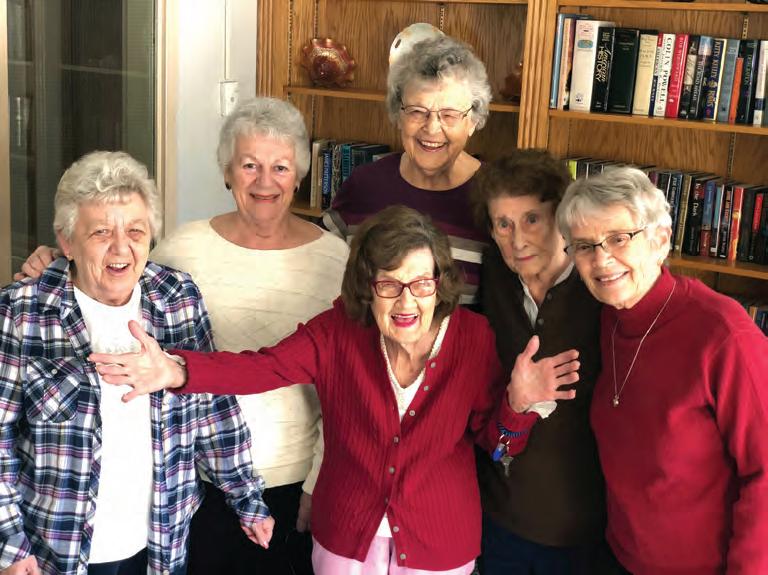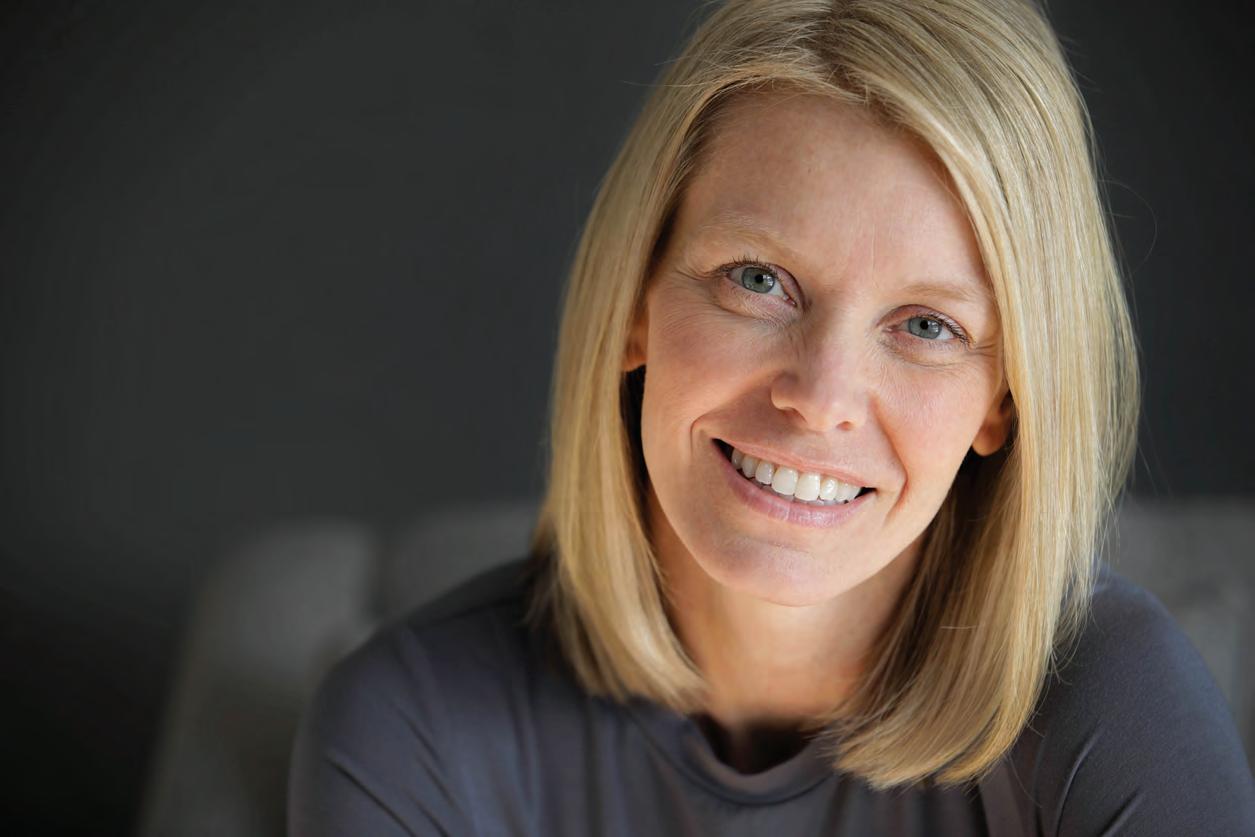
14 minute read
Where the Wild Things Are
By Beth Forkner Moe
With the explosion in STEM careers over the past couple decades, women have found professional homes in careers their mothers or grandmothers could never have dreamed of. We talked to two women originally from Southeast Minnesota who both love art, music and theater, and fell in love with science – particularly wildlife research – while in college. Emily Buege Donovan is a Spatial Analyst and Database Manager for the Snapshot Wisconsin Project, a network of citizen-run trail cameras. The Project is part of the Wisconsin Department of Natural Resources. She focuses on the data and science area of the Project, maintaining data quality and translating the data into products that are useful for wildlife management. She graduated from Winona State University with a degree in Ecology, then earned a Master’s degree in Geography with an emphasis on environmental and natural resources. Her thesis concentrated on the spatial distribution of tropical fish nests in Belize.
Katie Lieder is a Fisheries Technician with the La Crosse Fish & Wildlife Conservation Office in Onalaska, Wisc., which is part of the U.S. Fish and Wildlife Service. She has
worked there since graduating from Saint Mary’s University of Minnesota, where she majored in Environmental Biology. She works primarily with the Asian Carp Monitoring Program, as well as on a variety of other fisheries projects. She also works with freshwater mussels when she has the opportunity. We visited with them about their careers – what they do, what they love about it, and advice they would give to other women considering working in this field.

GF: So, Katie, tell us a bit more about the Asian Carp Monitoring Program and what they, along with freshwater mussels, tell us about the health of rivers, in particular where you work - the Mississippi River. KL: Asian Carp are invasive species found in the Mississippi and other rivers in the Midwest and elsewhere in the U.S. One way we can monitor for invasive carp is by going out and physically catching them, using gears like gill nets and electrofishing. We also track the movements of tagged carp with acoustic telemetry, so we can learn more about their behavior. I really like working with freshwater mussels because they are beautiful and unique animals that most people don’t think much about. They are also important indicators of water quality and improve the water quality in rivers by filtering water as they feed.
CONTINUES ON PAGE 14 u u u
Katie Lieder
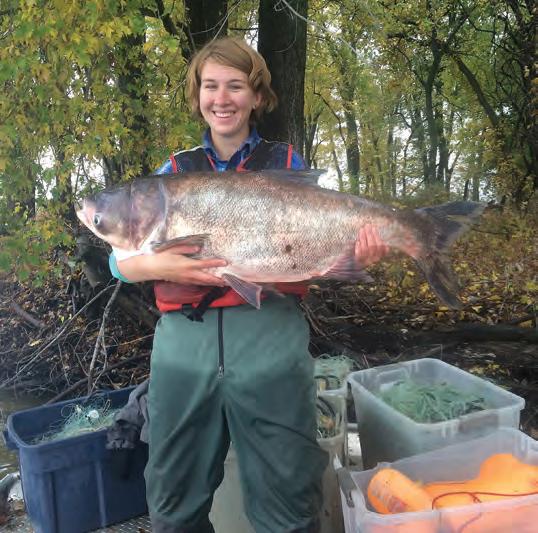
LARGE PHOTO: Emily Buege Donovan canoeing with her dog.

Katie Lieder
CONTINUED FROM page 13
GF: What’s involved in the majors you chose, in layman’s terms? EBD: Ecology is the study of organisms and how they interact with their environment, including other organisms. KL: Environmental Biology exposed me to a wide variety of disciplines, like ecology, zoology, botany, fisheries biology, and natural resource management. I have classmates who have gone into fields like environmental education, water quality, and working for parks and wildlife refuges.
GF: Did you always know you were going to be a scientist?
EBD: Yes and no. I have loved animals more than anything my entire life, but it wasn’t until I went on a travel study to Belize that I realized it was something I could do. Before landing on science, I almost went down the art path. I thought maybe someday I could be a videographer for “Planet Earth.” I took as many of the ecology-adjacent classes as were offered in high school, but there were only a few of them. I might have started down the ecology path sooner if I had had access to more classes like wildlife biology, entomology, etc. I started to dabble in ecology classes in my sophomore year (in college), but didn’t commit fully until after my (travel study) trip to Belize. KL: I took all the normal science classes in high school and really enjoyed them, but I was big into band and focused on music more than anything else. I wasn’t sure I wanted to go into science when I started college. I’m a horribly indecisive person, but I soon started to realize I could see myself going into a science career. I’ve always liked animals and being outdoors, so working in a natural resources field was a good fit.

GF: What types of internships did you do during college while working toward your degrees? EBD: I had an internship at the International Wolf Center in Ely, Minn. It was a great experience; wolves are an iconic albeit controversial species, and I learned so much about their biology and the social implications of the species. I gave wolf-centric presentations to visitors, conducted educational programming for kids about the ecology of the north woods, and even got Katie Lieder
Emily Buege Donovan
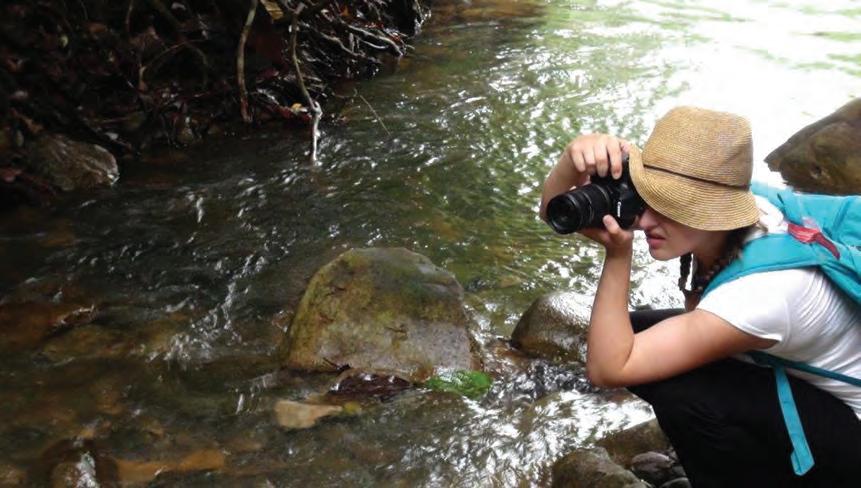
to do a little bit of care for the Center’s two arctic wolf pups – Axel and Grayson. KL: I was a student worker with Minnesota Pollution Control Agency for a summer when I was in school. I worked in the biological monitoring program, electrofishing to sample fish in watersheds to learn about water quality based on what fish are present there. Some fish are sensitive to pollution, and their presence or absence in a stream can indicate problems with water quality.
GF: Emily, can you explain more about Project Snapshot and what it does? EBD: One way we’re using the photos is for fawn-to-doe ratios, which is a metric that’s important for estimating Wisconsin’s deer population. We are currently identifying evidence of breeding in photos of birds, which will contribute to the Breeding Bird Atlas. I’m also trying to determine if it’s possible to supplement Great-Prairie Chicken surveys using trail cameras. Basically, instead of folks going out and sitting in a blind all morning, watching birds come and go from their breeding grounds, we’re seeing if cameras can alleviate some of the workload. We also collect date to help monitor Wisconsin’s elk population. I love the diversity of animal species I get to examine!
GF: I understand, Katie, that your dad is one of the Project Snapshot volunteers. What do both of you think about that?
EBD: One of the favorite aspects of my job is that I get to interact with a ton of incredible, enthusiastic volunteers. Snapshot WOULD NOT be able to function without the volunteers! KL: My dad loves the Snapshot Wisconsin program, and I love all the animal pictures he shows me from his trail cams! GF: What do you enjoy most about your jobs? EBD: I love that I get to go to work and study animals. I feel a great sense of pride for that and I find it endlessly interesting. Perhaps the most challenging aspects are also what I find rewarding - there are a lot of puzzles that need to be worked out with a project the size of Snapshot Wisconsin. KL: The best part of my job is definitely getting to work outdoors on the river! That can be the most challenging part, too. There’s a lot of planning and hard work involved in
Emily Buege Donovan

preparing for field work. People see me out on the river and say, “I wish I had your job; you get to be out on the water all day.” It’s great, but there’s a lot that goes into making sure our work gets done safely and effectively.
GF: Science has traditionally been male-dominated. As females in your pr ofession, what have you seen and experi
Katie Lieder

Emily Buege Donovan
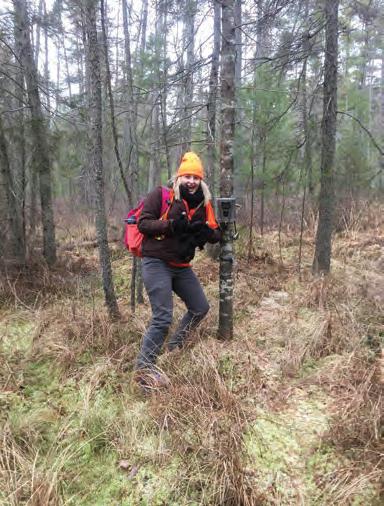

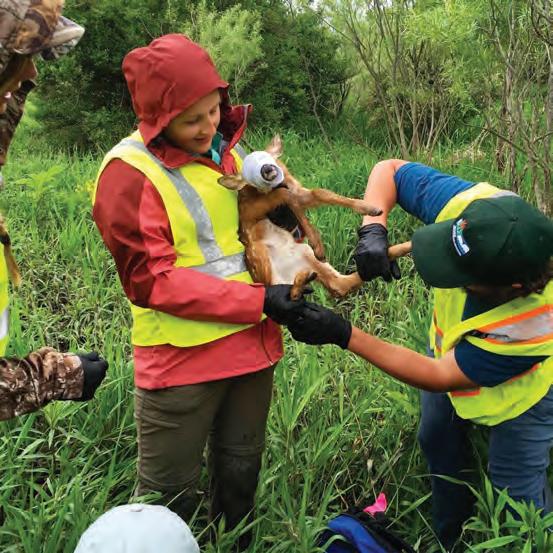
Emily Buege Donovan
Emily Buege Donovan
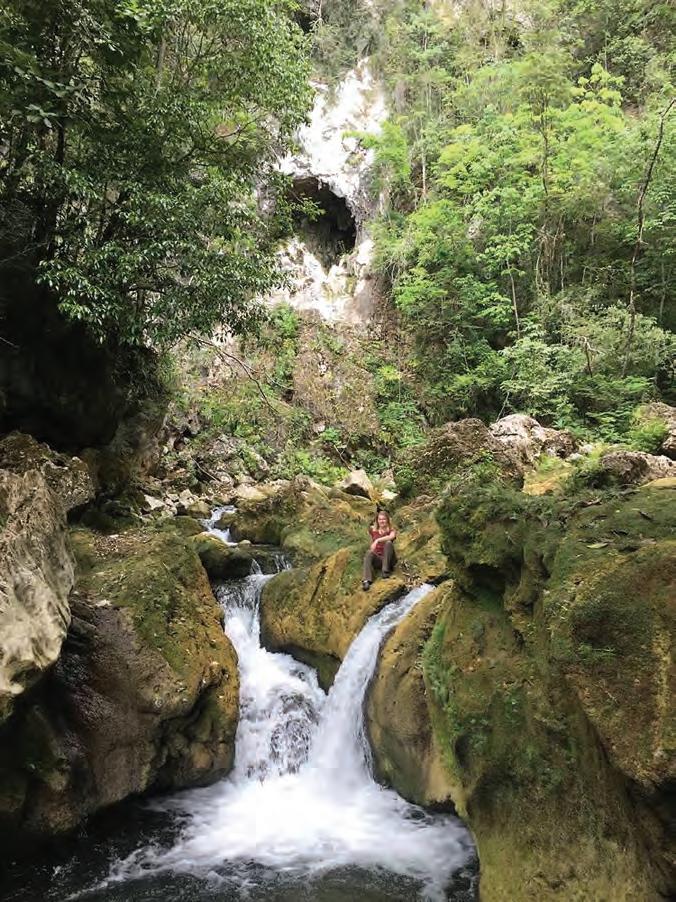
CONTINUED FROM page 15
enced in regard to this? Have you felt accepted, or do we still have a way to go? EBD: I feel very lucky to have had a good experience as a woman in science thus far. There have been a few rare instances where I felt like I wasn’t taken seriously, but I have had great women in STEM role model (including my advisors and my supervisors). Wildlife has traditionally been a male-dominated field, as with most sciences, but more and more women have been entering. I do feel like, as a woman in STEM, there is still more you have to do to prove yourself. Thankfully, for myself, I haven’t felt discriminated against at all for my gender, but there are a lot of studies out there that show there are issues that still persist with bias. Overall, I think it’s getting better. For myself, I just try to do my best and figure that most of the people I would want to work with wouldn’t have any issues with gender bias anyway! KL: I’ve been lucky to have a lot of role models as a woman in science that are also women – wonderful mentors and co-workers and supervisors who encourage me and lead by example. But I know that’s not the case everywhere, especially in the fisheries world. But I think that’s changing.
GF: What advice would you give to a woman who is thinking about entering your profession? EBD: My advice for women going into science would be to seek lots of opportunities for growth, such as internships, volunteer opportunities, and anything that can help you gain experience early on and make
connections. Not only will it help you stand out in the crowd, but it can also help you determine exactly where your interests lie. In the sciences, there are so many fields and sub-fields, it’s important to find your niche (ecology pun intended). It’s also important to work with a broad diversity of people. A diversity of perspectives can shape your worldview, and you never know when a connection might help you take the next step.
KL: I would tell women that if they see someone doing a job that they think they might be interested in, ask them about it! I’m always happy to answer questions about my job when people see me out in the field. Seeing other women in science careers when I was a student was really helpful. Representation is so important.
GF: Where do you see yourself 10 years from now? EBD: I love what I’m doing now, but I am actually preparing to apply for grad school again! I’d like to obtain my Ph.D. in spatial, movement, or migration ecology. I want to help develop our understanding of how animals use their environment and, ultimately, how we can conserve their environment to ensure its continued use. I can see a lot of avenues that might take me down that path, whether via a public agency, a non-profit, or an academic institution. KL: That’s a really good question! Sometimes I’m not so sure. I don’t think me from 10 years ago would necessarily have envisioned me now, so who knows where I’ll be in 10 more years? I would love to still be working in a natural resources field, whether that is fisheries or something else I haven’t even dreamed of yet.
GF: What else would you like people to know about you? What ar e your hobbies, your interests outside of work, etc.? EBD: My most noteworthy hobby is probably puppy-raising for Canine Companions for Independence (CCI). They give me a puppy; I raise it for 18 months, provide it with endless socialization opportunities, and teach it manners and commands. It eventually becomes a service animal for someone with a disability. I’m working on my third puppy – Raynor – right now and anticipate getting a fourth one soon! Beyond that, I still enjoy creating things, especially through photography and drawing. I love be outdoors and to travel, especially to places where there are a lot of animals to see. KL: Like I mentioned before, I do like music. I still play trumpet in the SMU band sometimes. One of my biggest hobbies is crafting – knitting and crocheting, specifically. I enjoy getting outdoors outside of work, too with hiking around La Crosse and gardening.

Emily Buege Donovan
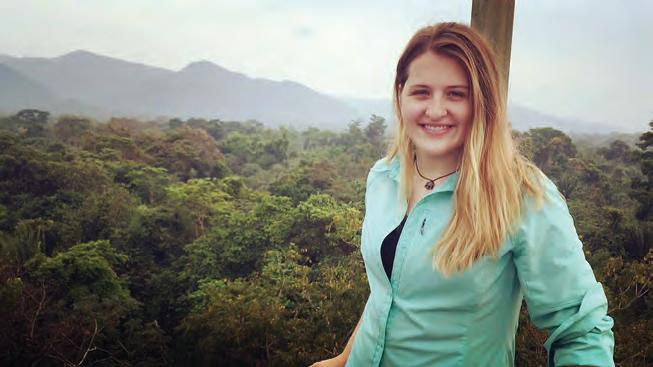
Beth Forkner Moe is the Editor of SouthernMinn Girlfriends Magazine. She loves learning about science adventures, even though she took as few science classes as possible in school and was a Mass Communications major, with a minor in English writing.
jonas Trent Jonas is a Twin Cities-based writer and divorced father of two. He is fascinated and frightened by women but is working through his issues.
the to A s I write this, I am sitting near the Gulf of Mexico in Treasure Island, Fla.. It’s a sunny February morning: Slight breeze rustling in the palm fronds and I, literally, cannot see a cloud in the uninterrupted blue field of the sky. It’s 62 degrees out, on the way to a high in the lower 70’s. Not bad, right? Y ou wouldn’t think so. Except, earlier this week, the high temperature in Antarctica was higher than the forecast high today in the Tampa Bay area. Let me say that again: Antarctica was warmer than Florida. W orse, it wasn’t even an isolated temperature spike. The Earth’s oldest
continent set a record for the highest
temperature ever recorded when the mercury grazed 65°
Fahrenheit early this week.
Two days later, it broke that record by almost 10 degrees. Seventyfive degrees! In Antarctica. This should alarm everybody. Polar ice caps cannot withstand temperatures like this. Melting ice caps mean rising sea levels. And rising sea levels mean that spots like the one where I am sitting as I write could very likely be under water in the foreseeable future.
That goes for places such as Miami, New Orleans, New York City, much of Los Angeles and other coastal population centers. People should be alarmed.
The climate crisis that we currently face - and when I say “we,” I mean the entire species of Homo sapiens as well as every other living creature on this planet - is of an unprecedented proportion. And the only way to do something about it is through science, communication and education. A man ’s perspective
imperative innovate
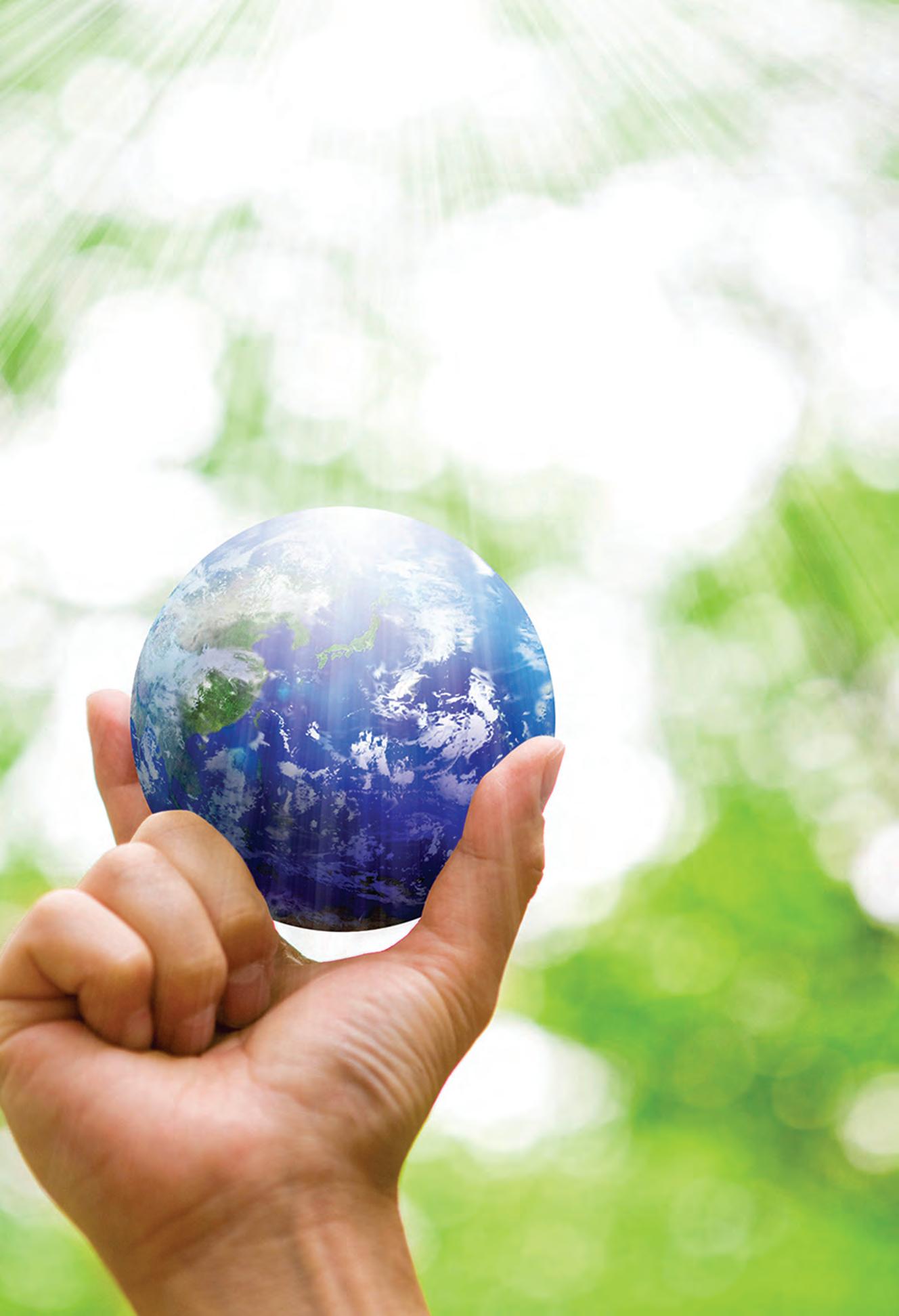

The science is there. However, younger people need to take up the mantle and push the boundaries of our ability to understand the causes, effects, and extent of climate change, as well as to figure out what we can do to halt, or hopefully, reverse it. This requires innovation and a shift in people’s perspectives - especially among those who set climate policy.
The brilliant wor ds of astronomer Carl Sagan make the best case for such innovation and why it is imperative. The same week that Antarctica set its high temperature record also saw the 30th anniversary of NASA’s famous “pale blue dot” photo.
When Voyager 1 was more than a billion miles beyond Neptune, and just before it shut down its cameras and entered interstellar space, Sagan asked the Voyager team to turn the probe back toward our solar system to take a “family portrait” of its planets. The image that they captured of Earth was a pinprick of light, dimmer than some of the brightest stars we see in our night sky, in a filtered burst of sunlight. The image, in tur n, inspired Sagan to publish his book, A Pale Blue Dot, in which he wrote: “Look again at that dot. That’s here. That’s home. That’s us. On it everyone you love, everyone you know, everyone you ever heard of, every human being who ever was, lived out their lives. The aggregate of our joy and suffering, thousands of confident religions, ideologies, and economic doctrines, every hunter and forager, every hero and coward, every creator and destroyer of civilization, every king and peasant, every young couple in love, every mother and father, hopeful child, inventor and explorer, every teacher of morals, every corrupt politician, every ‘superstar,’ every ‘supreme leader,’ every saint and sinner in the history of our species lived there-on a mote of dust suspended in a sunbeam.” The Earth is where we live. It is all we have. It is all those of us who are currently living will ever know. As Sagan said, “There is perhaps no better demonstration of the folly of human conceits than this distant image of our tiny world.” This is why we need innovators: to correct the course of our species’ folly and conceits. W e have, as Sagan wrote, a “responsibility to deal more kindly with one another, and to preserve and cherish the pale blue dot, the only home we’ve ever known.”

